When planning a new boiler project, many buyers focus heavily on the purchase price while overlooking the much larger lifecycle operating expenses. This imbalance often results in selecting the wrong system — one that may be cheap upfront but costly to run, maintain, and fuel over its lifetime.
The capital cost of a steam boiler refers to the initial investment, including the boiler unit, auxiliaries (burner, economizer, feedwater system), installation, and commissioning. This can range from tens of thousands to several million dollars depending on capacity and design. Operational costs, on the other hand, include fuel consumption, water treatment, labor, maintenance, and periodic part replacement. For most industrial steam boilers, fuel alone accounts for over 70% of the total lifecycle cost, meaning operational expenses far exceed capital costs over time.
Understanding this balance is essential for making cost-effective, long-term decisions.
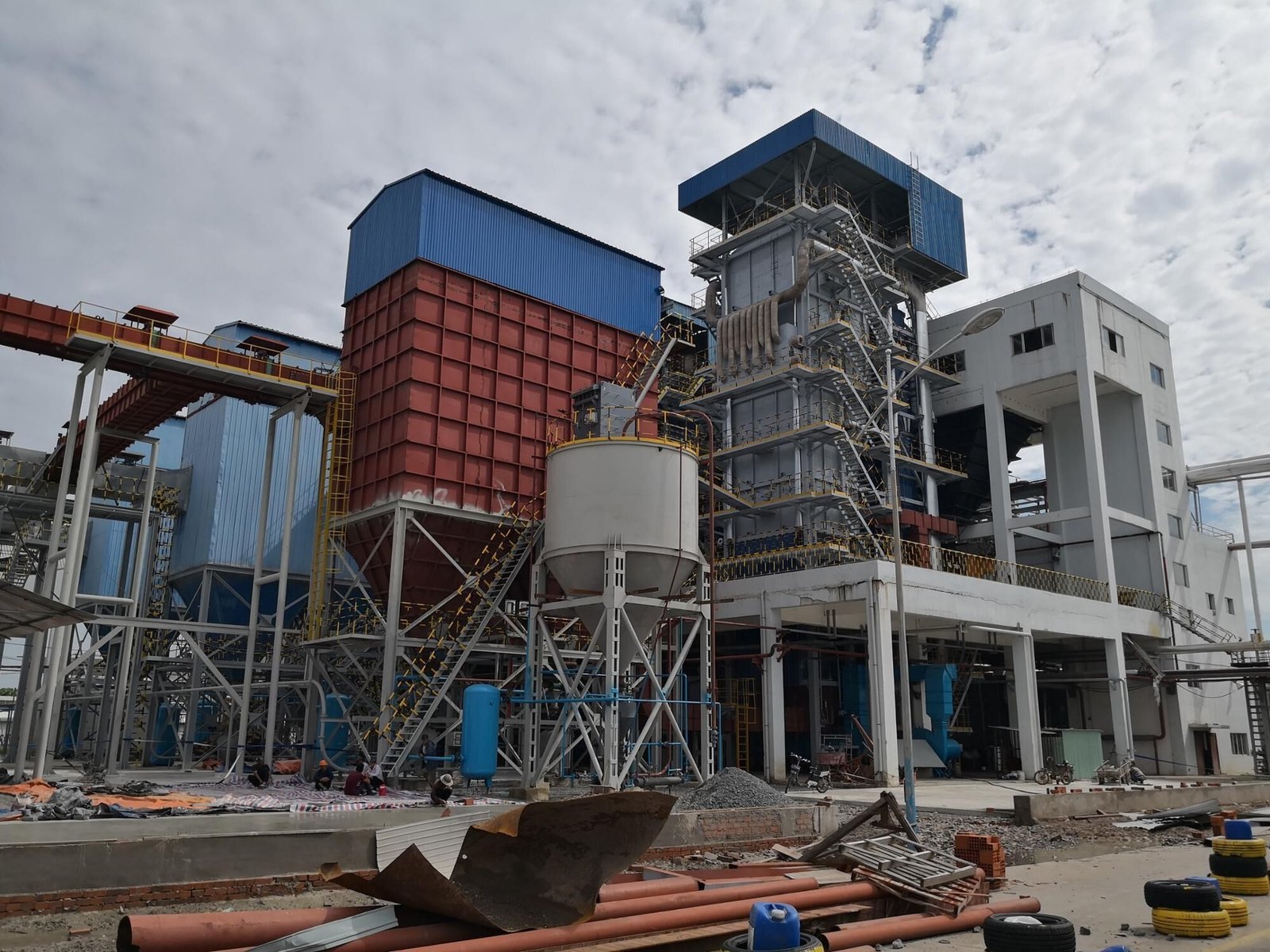
What are the main components of the capital cost for steam boilers?
When companies plan to invest in new steam boilers, one of the most pressing concerns is the high upfront cost. A poorly understood cost structure can lead to budget overruns, missed financial targets, or underinvestment in critical components like controls and water treatment. The consequences may include lower efficiency, compliance issues, and higher lifetime operating costs. The solution lies in understanding the capital cost structure of steam boilers and where the major investments go, allowing decision-makers to budget accurately and select the right system.
The main components of the capital cost for steam boilers include the boiler unit itself, burner system, control and instrumentation, auxiliary equipment (such as feedwater systems and economizers), installation and commissioning, and supporting infrastructure like piping, ducting, and foundations. Together, these account for the total installed cost (TIC), which can be two to three times the base equipment cost.
By recognizing these components, plant owners and engineers can better plan procurement strategies, evaluate return on investment, and avoid the hidden expenses that often arise during boiler projects.
The capital cost of a steam boiler only includes the boiler vessel itself.False
The vessel is only part of the cost; controls, burners, auxiliaries, and installation often exceed equipment cost.
Installation and commissioning represent a significant portion of boiler capital cost.True
Labor, piping, wiring, and testing can equal or exceed the base price of the boiler equipment.
Major Components of Steam Boiler Capital Cost
1. Boiler Unit (Pressure Vessel and Heat Exchanger)
Forms the largest portion of base cost.
Includes drums, tubes, furnace, and casing.
Materials (carbon steel, alloy, stainless) impact price significantly.
2. Burner and Combustion System
Oil, gas, coal, or biomass firing equipment.
Includes fans, fuel handling systems, and emission reduction technologies (e.g., low-NOx burners).
3. Control and Instrumentation
PLC/SCADA systems, pressure/temperature sensors, and safety interlocks.
Increasingly costly as plants adopt automation and digital monitoring.
4. Auxiliary Equipment
Feedwater pumps, deaerators, water treatment systems, and economizers.
Critical for efficiency and reliability.
| Cost Component | Typical Share of Total Installed Cost | Notes |
|---|---|---|
| Boiler Unit | 25–35% | Depends on size & material |
| Burner System | 10–15% | Fuel flexibility increases cost |
| Controls & Instrumentation | 8–12% | Automation adds value |
| Auxiliary Equipment | 15–25% | Includes feedwater & economizers |
| Installation & Commissioning | 20–30% | Labor-intensive |
| Civil/Structural Work | 5–10% | Foundations, ducting, stack |
5. Installation and Commissioning
Labor, piping, ductwork, cabling, and integration with plant systems.
Testing and start-up calibration.
6. Civil and Structural Work
Boiler house foundations, chimneys/stacks, and steel structures.
Site-specific and often underestimated in early budgets.
Example Capital Cost Breakdown
| Example 50 TPH Gas-Fired Boiler Project | Cost (USD million) | Share (%) |
|---|---|---|
| Boiler Unit | 2.5 | 30% |
| Burner & Combustion | 1.0 | 12% |
| Controls & Instrumentation | 0.8 | 10% |
| Auxiliaries (feedwater, economizer, etc.) | 1.7 | 20% |
| Installation & Commissioning | 2.0 | 24% |
| Civil/Structural Work | 0.5 | 6% |
| Total Installed Cost (TIC) | 8.5 | 100% |
Conclusion
The capital cost of a steam boiler project is far more than the purchase price of the boiler itself. Burners, controls, auxiliary equipment, installation, and civil works all contribute substantially to the total installed cost. By understanding this breakdown, plant managers can budget realistically, evaluate tenders more effectively, and avoid cost overruns while ensuring the boiler system is complete, efficient, and compliant with modern industrial standards.
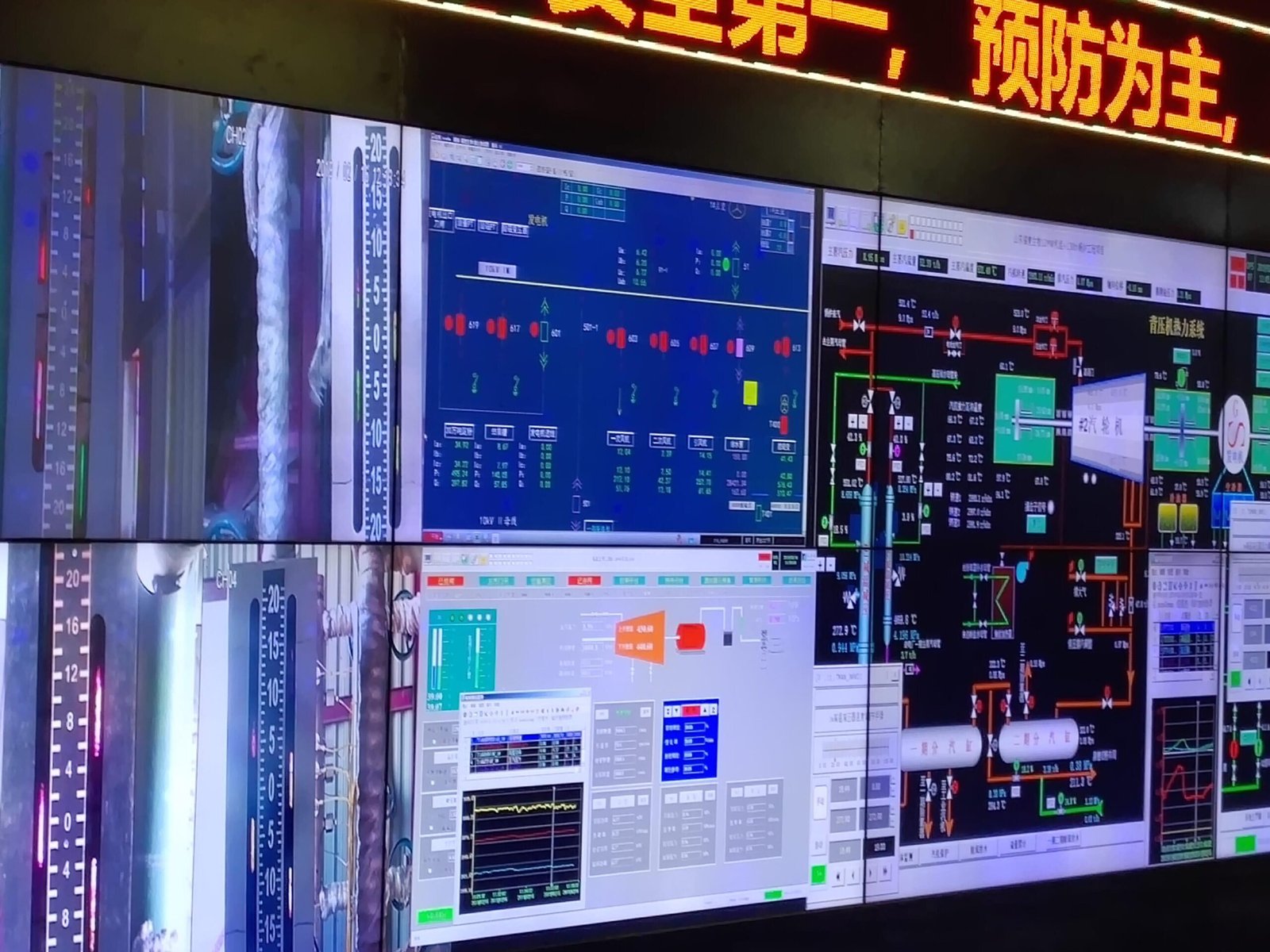
How do operational costs compare to capital costs over the boiler’s lifecycle?
When evaluating a steam boiler investment, many companies focus heavily on the upfront capital cost. While this cost can be substantial, it represents only a fraction of the total lifecycle expense. The true financial burden often comes from operational costs such as fuel, water treatment, maintenance, labor, and compliance, which accumulate year after year. If decision-makers overlook this, they risk underestimating long-term expenses and selecting systems that appear affordable at purchase but become costly liabilities over decades of operation.
Over a boiler’s lifecycle, operational costs far exceed capital costs. Fuel alone typically accounts for 60–80% of lifetime expenses, while capital costs usually represent only 15–25%. Maintenance, labor, and compliance further increase operational costs, meaning lifecycle cost analysis is critical when evaluating boiler investments.
This cost reality highlights why efficiency, fuel choice, and maintenance strategies are more important than minimizing initial capital spending. Boilers designed for efficiency and equipped with modern controls may cost more upfront but deliver substantial long-term savings.
Capital costs are usually the largest share of a boiler’s total lifecycle cost.False
Capital costs are significant but usually only 15–25% of lifecycle cost; fuel and operations dominate.
Fuel costs account for the majority of a boiler’s lifetime expenses.True
Fuel often represents 60–80% of total lifecycle cost, making efficiency improvements highly valuable.
Lifecycle Cost Distribution
| Cost Category | Typical Share (%) | Notes |
|---|---|---|
| Capital Cost (Boiler, installation, auxiliaries) | 15–25% | Paid upfront |
| Fuel | 60–80% | Largest driver, depends on efficiency and fuel type |
| Maintenance & Repairs | 5–10% | Includes spare parts and labor |
| Water Treatment & Chemicals | 2–4% | Needed to prevent scaling/corrosion |
| Labor & Operations | 3–6% | Operator staffing, monitoring |
| Compliance & Emissions Control | 2–5% | Testing, monitoring, reporting |
Example: 50 TPH Natural Gas Boiler (20-Year Lifecycle)
| Cost Component | Estimated Lifetime Cost (USD million) | Share (%) |
|---|---|---|
| Capital Cost | 8.5 | 18% |
| Fuel | 32.0 | 69% |
| Maintenance | 3.0 | 6% |
| Water Treatment | 1.2 | 3% |
| Labor | 2.0 | 4% |
| Compliance | 1.5 | 3% |
| Total Lifecycle Cost | 48.2 | 100% |
Why Operational Costs Dominate
Fuel Dependency – Even small inefficiencies (1–2%) can translate into millions in wasted fuel over 20 years.
Maintenance Needs – Boiler tubes, burners, pumps, and controls require routine service to prevent costly breakdowns.
Water Chemistry – Continuous treatment is necessary to prevent scaling and corrosion.
Compliance Costs – Emissions regulations require monitoring, testing, and sometimes additional hardware upgrades.
Strategic Implications
Efficiency is ROI: Investing in high-efficiency boilers, economizers, and digital monitoring reduces fuel consumption significantly.
Predictive Maintenance Saves Money: Shifts costs from emergency repairs to planned interventions.
Fuel Choice Matters: Natural gas, biomass, or hybrid systems can impact lifecycle costs dramatically.
Lifecycle Analysis > Lowest Bid: A boiler with slightly higher upfront cost but 5–10% better efficiency usually pays for itself within a few years.
Conclusion
While capital costs are highly visible at project launch, operational costs dominate over a boiler’s lifecycle. Fuel consumption alone outweighs the purchase and installation price many times over. For this reason, lifecycle cost analysis must guide procurement decisions, ensuring efficiency, maintenance planning, and compliance strategies are prioritized to deliver true long-term value.
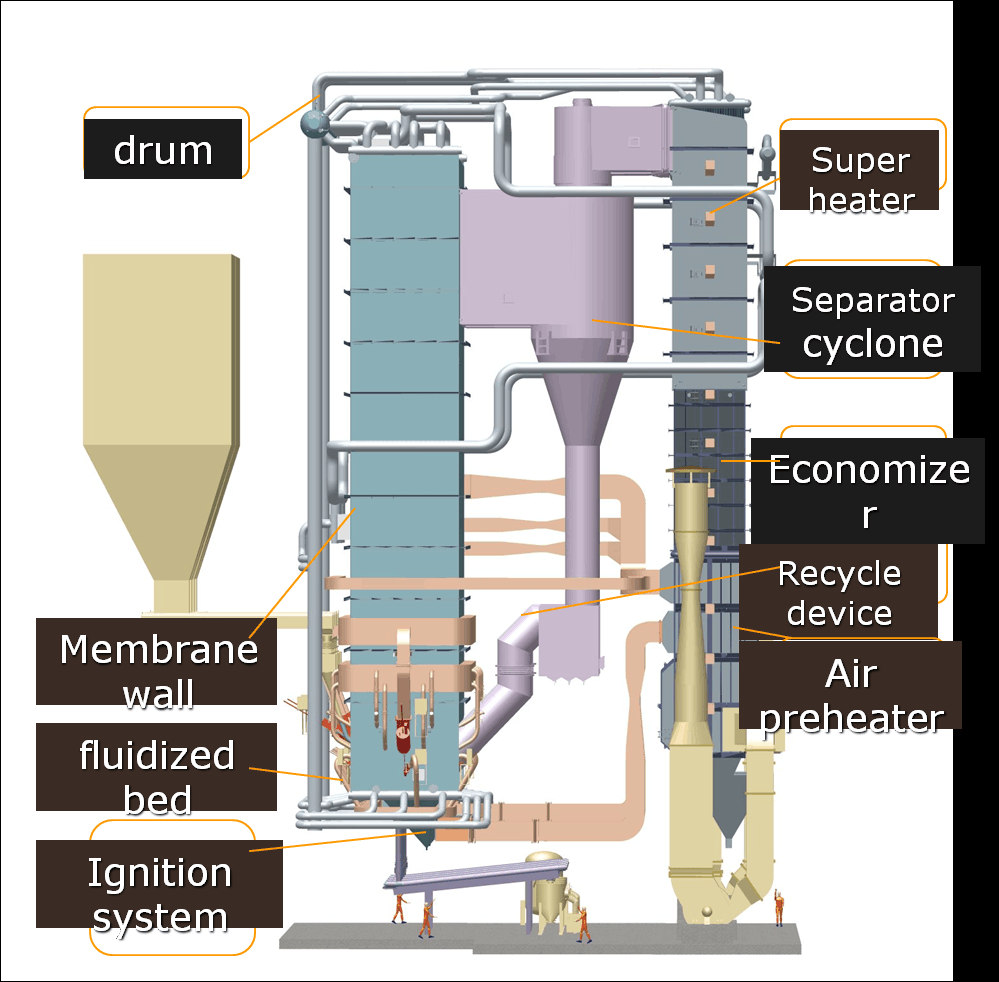
Why is fuel cost the dominant factor in boiler operational expenses?
For most industrial plants, the primary purpose of a boiler is to convert fuel into usable steam or heat. While labor, maintenance, water treatment, and compliance costs add to the operational budget, none compare to the magnitude of fuel expenses. Companies that overlook this reality often focus too much on minimizing upfront costs or routine service, while missing the fact that fuel decisions and combustion efficiency have the greatest impact on long-term profitability.
Fuel cost dominates boiler operational expenses because boilers consume large volumes of energy continuously, and even small variations in efficiency or fuel pricing translate into massive lifetime costs. Fuel typically accounts for 60–80% of a boiler’s total operating expenses, far outweighing maintenance, labor, and water treatment.
This explains why boiler design, combustion tuning, and fuel selection are central to lifecycle cost analysis. Improving efficiency by just 1–2% can save millions over decades of operation, making fuel the most critical cost factor in boiler economics.
Labor and maintenance are the largest components of boiler operating costs.False
While important, labor and maintenance are minor compared to the overwhelming share of fuel expenses.
Fuel typically represents 60–80% of total boiler operating costs.True
Due to continuous fuel consumption, energy costs dominate the operational budget of boilers.
How Fuel Drives Operational Costs
Continuous Consumption – Boilers often run 24/7, consuming massive amounts of energy daily.
High Energy Input – Generating steam requires large heat transfer, which is directly proportional to fuel burned.
Efficiency Sensitivity – A 1% efficiency drop in a 50 TPH boiler may waste hundreds of thousands of dollars in extra fuel annually.
Fuel Price Volatility – Natural gas, coal, oil, and biomass prices fluctuate significantly, directly impacting operational budgets.
Cost Distribution in Boiler Operations
| Expense Category | Typical Share (%) | Notes |
|---|---|---|
| Fuel | 60–80% | Largest cost driver |
| Maintenance | 5–10% | Spare parts, service labor |
| Labor | 3–6% | Operators, supervisors |
| Water Treatment | 2–4% | Chemicals, testing |
| Compliance & Emissions | 2–5% | Monitoring, reporting |
Example Calculation: 50 TPH Natural Gas Boiler
Fuel consumption: ~4,000 Nm³/h at full load
Average cost: $0.30/Nm³
Annual operation: 8,000 hours
Annual fuel cost = $9.6 million
By comparison:
Maintenance = ~$0.5 million/year
Labor = ~$0.3 million/year
Water treatment = ~$0.15 million/year
Clearly, fuel dwarfs all other categories.
Strategies to Control Fuel Costs
High-Efficiency Boiler Design: Modern designs with economizers, air preheaters, and low excess air operation.
Digital Combustion Monitoring: Continuous O₂ and CO monitoring for optimal burner adjustment.
Fuel Switching: Shifting to lower-cost or renewable fuels when possible.
Waste Heat Recovery: Capturing flue gas heat for feedwater preheating.
Regular Maintenance: Preventing fouling, scaling, and burner misalignment that waste energy.
Conclusion
Fuel cost is the dominant factor in boiler operational expenses because energy consumption is continuous, massive, and directly tied to efficiency and fuel pricing. While other expenses remain important, optimizing combustion efficiency and fuel strategy yields the largest financial impact, making fuel management the cornerstone of boiler economics.

How do maintenance, water treatment, and labor contribute to ongoing costs?
When analyzing the lifecycle costs of steam boilers, fuel is usually the most significant expense. However, other operational costs—specifically maintenance, water treatment, and labor—play critical roles in ensuring safe, efficient, and compliant operation. Neglecting these areas may seem like cost savings in the short term, but it often leads to expensive breakdowns, premature boiler failure, or unsafe conditions. To fully understand boiler economics, companies must evaluate how these supporting costs contribute to the overall financial picture.
Maintenance, water treatment, and labor contribute to ongoing boiler costs by ensuring reliability, preventing efficiency losses, and maintaining safe operation. Maintenance typically accounts for 5–10% of operating expenses, water treatment 2–4%, and labor 3–6%. While smaller than fuel costs, these categories are essential for preventing failures, avoiding downtime, and extending boiler life.
In other words, these costs are the backbone of operational sustainability. Skimping on them almost always results in higher fuel costs, more frequent repairs, and regulatory penalties down the line.
Non-fuel costs like maintenance, labor, and water treatment are negligible in boiler operations.False
Though smaller than fuel costs, these expenses are essential for long-term efficiency, safety, and compliance.
Maintenance, water treatment, and labor typically make up 10–20% of a boiler’s operating expenses.True
These supporting costs, while smaller than fuel, are critical to overall lifecycle performance.
1. Maintenance Costs
Regular inspections, part replacements, and predictive repairs keep boilers operating within design parameters. Key contributors include:
Routine servicing of burners, pumps, fans, and controls.
Planned outages for tube cleaning, refractory checks, and safety valve testing.
Spare parts and consumables such as gaskets, filters, and lubricants.
Predictive tools like vibration analysis and thermography to prevent failures.
| Maintenance Task | Frequency | Cost Impact | Benefit |
|---|---|---|---|
| Burner tuning | Quarterly | Moderate | 1–3% fuel savings |
| Tube cleaning | Annually | High | Restores efficiency |
| Safety valve testing | Annually | Low | Ensures compliance |
| Predictive inspections | Ongoing | Moderate | Prevents unplanned outages |
2. Water Treatment Costs
Water chemistry directly affects efficiency and equipment longevity. Key expenses include:
Chemicals (phosphates, sulfites, amines) for hardness, oxygen, and pH control.
Testing and monitoring for TDS, pH, alkalinity, and dissolved gases.
Equipment such as softeners, demineralizers, and dosing systems.
| Water Treatment Cost | Typical Share of OPEX | Risk if Neglected |
|---|---|---|
| Chemicals | 1–2% | Scaling, corrosion |
| Testing & Lab Analysis | <1% | Undetected chemistry issues |
| Equipment Upkeep | 1–2% | Loss of treatment effectiveness |
Without proper treatment, scaling can increase fuel costs by 5–10% and corrosion can cause catastrophic tube failures.
3. Labor Costs
Trained personnel are essential to safe and efficient operation. Labor costs include:
Operators for monitoring, blowdowns, and daily checks.
Technicians and engineers for troubleshooting and optimization.
Training to maintain competency with modern controls and safety practices.
| Labor Element | Cost Share | Value Contribution |
|---|---|---|
| Operators (daily checks) | 2–3% | Prevent unsafe conditions |
| Maintenance staff | 1–2% | Reduce downtime |
| Training programs | <1% | Improves reliability |
Example Ongoing Cost Breakdown (20-Year Lifecycle for 50 TPH Boiler)
| Cost Category | Lifetime Cost (USD million) | Share (%) |
|---|---|---|
| Maintenance | 3.0 | 6% |
| Water Treatment | 1.2 | 2% |
| Labor | 2.0 | 4% |
| Fuel | 32.0 | 69% |
| Compliance & Misc. | 1.5 | 3% |
| Total | 39.7 | 100% |
Conclusion
Maintenance, water treatment, and labor may not rival fuel costs, but they form the critical support structure of boiler economics. They prevent scaling, corrosion, and failures that would otherwise drive up fuel use and emergency repair expenses. Viewed correctly, these costs are not overhead—they are strategic investments in reliability, compliance, and long-term cost savings.
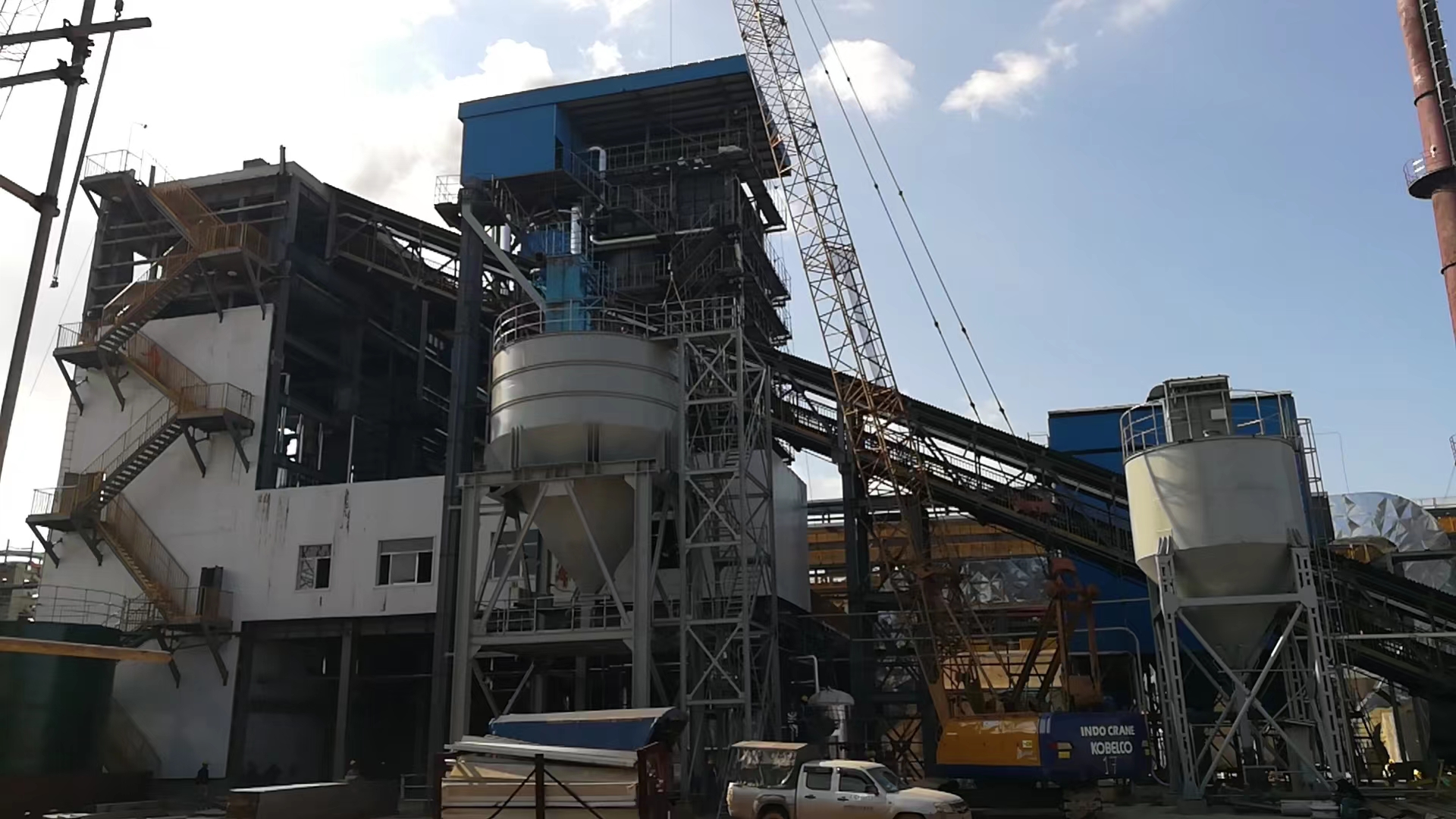
What is the typical payback period for investing in high-efficiency boilers?
Industrial boilers are capital-intensive assets, and companies often hesitate to choose higher-efficiency models because of their higher upfront price. The pain point arises when managers prioritize initial cost savings, only to face higher fuel bills and operating costs for decades. Since fuel is the dominant operating expense, overlooking efficiency improvements can lock a plant into millions in unnecessary lifetime costs. The solution lies in evaluating the payback period—how quickly fuel savings offset the additional capital investment in high-efficiency boilers.
The typical payback period for investing in high-efficiency boilers ranges from 2 to 5 years, depending on fuel prices, boiler size, operating hours, and efficiency improvement achieved. In continuous industrial operation with high fuel consumption, payback can be even shorter, while facilities with intermittent use may see longer returns.
This makes lifecycle cost analysis far more important than focusing only on initial purchase price. In many cases, efficiency-related upgrades like economizers, advanced controls, and waste-heat recovery provide some of the fastest returns on investment in industrial energy systems.
High-efficiency boilers never recover their higher upfront cost.False
Fuel savings quickly outweigh the additional capital, with typical payback in 2–5 years.
Payback periods for high-efficiency boilers are typically within 2 to 5 years.True
Continuous fuel savings accelerate ROI, especially in high-load industrial applications.
Factors Affecting Payback
Fuel Type & Cost – Higher-cost fuels (oil, natural gas) shorten payback because efficiency saves more money.
Boiler Size & Load Factor – Larger boilers and continuous operation accelerate returns.
Efficiency Gain – A jump from 80% to 90% efficiency translates to ~12.5% fuel savings.
Operating Hours – 24/7 plants recover investments much faster than seasonal users.
Additional Upgrades – Economizers, O₂ trim systems, and heat recovery reduce payback time further.
Example Payback Calculation
Assume:
Boiler capacity: 50 TPH
Fuel: Natural gas at $0.30/Nm³
Annual operation: 8,000 hours
Standard boiler efficiency: 82%
High-efficiency boiler efficiency: 90%
Additional capital cost: $1.2 million
Fuel savings:
Annual fuel input (82%): ~33.4 million Nm³
Annual fuel input (90%): ~30.4 million Nm³
Fuel saved = 3.0 million Nm³/year = $0.9 million/year
Payback period = $1.2M ÷ $0.9M = ~1.3 years
Payback Ranges by Industry
| Industry | Typical Load Profile | Payback Period |
|---|---|---|
| Petrochemicals | 24/7 continuous | 1–2 years |
| Food Processing | Long shifts, high steam demand | 2–3 years |
| Paper Mills | Continuous large loads | 2 years |
| Hospitals | High base load with seasonal peaks | 3–4 years |
| Universities | Seasonal heating | 4–6 years |
Conclusion
For most industrial facilities, high-efficiency boilers pay for themselves in just 2–5 years—sometimes in as little as one year under heavy load and high fuel prices. Since boilers often operate for 20–30 years, the cumulative savings can dwarf the original investment. This makes efficiency not just an environmental decision but one of the strongest financial choices in industrial energy management.
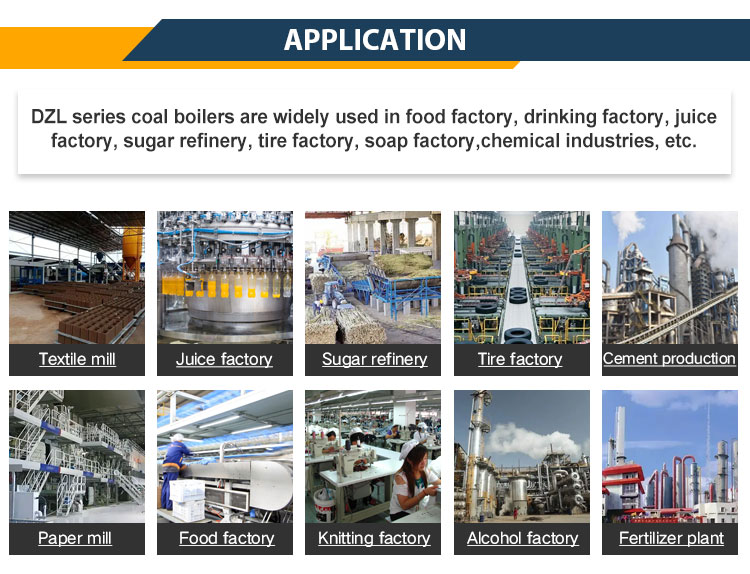
How can lifecycle cost analysis help optimize boiler investment decisions?
When companies invest in industrial boilers, the temptation is often to prioritize the lowest upfront cost. This short-term mindset creates a major pain point: low-cost boilers may require more maintenance, consume more fuel, and fail earlier, leading to total lifecycle costs far higher than anticipated. The consequence is an asset that appears cheap at first but becomes financially and operationally burdensome over decades of service. The solution is lifecycle cost analysis (LCCA)—a structured method to evaluate not only the purchase price but also the long-term costs of fuel, maintenance, water treatment, labor, and compliance.
Lifecycle cost analysis helps optimize boiler investment decisions by comparing the total cost of ownership—including capital, fuel, maintenance, labor, and compliance—over the boiler’s lifespan. This approach ensures decision-makers prioritize efficiency and reliability, often revealing that higher-efficiency boilers with greater upfront costs deliver lower total costs and faster ROI than cheaper alternatives.
By applying LCCA, companies can align boiler investments with strategic goals: lowering operating expenses, reducing risk, and ensuring compliance with energy and environmental regulations.
The cheapest boiler at purchase is always the most cost-effective choice.False
Boilers with lower upfront cost often have higher fuel and maintenance expenses, making them more expensive long-term.
Lifecycle cost analysis considers all expenses over a boiler’s service life, not just capital cost.True
LCCA accounts for fuel, water treatment, labor, maintenance, and compliance costs, providing a full economic picture.
Key Components of Lifecycle Cost Analysis
| Cost Category | Typical Share of Lifecycle Cost | Impact |
|---|---|---|
| Capital Cost | 15–25% | Upfront purchase, installation, civil works |
| Fuel | 60–80% | Dominant expense, efficiency-driven |
| Maintenance & Repairs | 5–10% | Prevents breakdowns, extends lifespan |
| Water Treatment | 2–4% | Protects against scaling/corrosion |
| Labor & Operations | 3–6% | Skilled staff required |
| Compliance & Emissions | 2–5% | Regulatory testing and reporting |
Example: Lifecycle Cost Comparison (20-Year, 50 TPH Natural Gas Boiler)
| Parameter | Standard Boiler (82% eff.) | High-Efficiency Boiler (90% eff.) |
|---|---|---|
| Capital Cost (USD million) | 7.5 | 8.7 |
| Fuel Cost (20 years) | 36.0 | 32.0 |
| Maintenance & Others | 6.0 | 6.0 |
| Total Lifecycle Cost | 49.5 | 46.7 |
| Payback Period | — | ~2 years |
This example shows that although the high-efficiency boiler costs $1.2M more upfront, it saves $3M over its lifetime.
How LCCA Optimizes Boiler Investments
Reveals Hidden Costs – Shows the dominance of fuel costs over capital expenses.
Supports Long-Term Planning – Ensures financial forecasts align with actual operating realities.
Improves Vendor Evaluation – Allows fair comparison of tenders beyond sticker price.
Aligns with Sustainability Goals – Energy-efficient boilers reduce both costs and emissions.
Reduces Risk – Prevents underestimating expenses that can lead to financial strain.
Conclusion
Lifecycle cost analysis transforms boiler procurement from a short-term purchase decision into a strategic investment strategy. By accounting for all costs—not just the purchase price—LCCA ensures companies select boilers that deliver efficiency, reliability, and compliance at the lowest total cost of ownership. For capital-intensive assets like boilers, this approach is essential to optimize long-term value.
🔍 Conclusion
While the capital cost of a steam boiler is significant, it is the operational costs — especially fuel — that dominate over the system’s lifetime. Therefore, selecting a boiler with high efficiency, reliable design, and proper maintenance planning delivers the best long-term value.
📞 Contact Us
💡 Need help evaluating boiler costs? We provide lifecycle cost analysis, high-efficiency boiler solutions, and turnkey project support to ensure maximum ROI for your investment.
🔹 Contact us today to balance capital and operational costs for your steam boiler project. 💰🔥📊✅
FAQ
What are the capital costs of steam boilers?
Capital costs are one-time upfront expenses required to purchase and install a steam boiler system. They typically include:
Boiler equipment purchase – Steam drum, furnace, heat exchangers, burners.
Auxiliary systems – Feedwater pumps, economizers, blowdown systems, controls.
Installation and commissioning – Piping, electrical connections, civil works.
Engineering and permits – Design, regulatory compliance, safety approvals.
Depending on capacity and fuel type, capital costs range from $50,000 for small units to $10M+ for utility-scale boilers.
What are the operational costs of steam boilers?
Operational costs are ongoing expenses of running a boiler. These include:
Fuel costs – The largest expense (60–80% of total OPEX).
Water treatment and chemicals – Prevent scaling and corrosion.
Maintenance and repairs – Routine inspections, tube cleaning, refractory work.
Labor costs – Skilled operators and technicians.
Utilities and consumables – Electricity for pumps, fans, and controls.
Operational costs can often exceed capital costs over the boiler’s lifecycle.
Which has more impact: capital costs or operational costs?
Short term: Capital costs dominate (purchase and installation).
Long term: Operational costs (mainly fuel and maintenance) far outweigh capital investment.
For example, over a 20-year lifecycle, fuel can account for 70%+ of total cost of ownership (TCO).
How can operational costs be reduced in steam boilers?
Efficiency improvements help lower OPEX:
Install economizers and condensate recovery.
Optimize combustion and excess air control.
Use high-quality water treatment to reduce scaling.
Schedule preventive maintenance to avoid costly breakdowns.
Consider automation and digital monitoring to cut labor and energy waste.
What is the importance of lifecycle cost analysis in boiler selection?
Choosing a boiler only on capital cost can be misleading. A cheap boiler with poor efficiency will cost far more in fuel over time. Lifecycle cost analysis considers:
Initial investment (CAPEX)
Fuel and operating expenses (OPEX)
Maintenance and repair costs
Expected service life
This approach ensures the lowest total cost of ownership and better long-term returns.
References
U.S. Department of Energy – Lifecycle Costs of Boilers – https://www.energy.gov
ASME – Boiler Costs and Efficiency Guidelines – https://www.asme.org
IEA – Industrial Boiler Energy Costs Analysis – https://www.iea.org
Spirax Sarco – Steam Boiler Lifecycle Costs – https://www.spiraxsarco.com
Forbes Marshall – Boiler Efficiency and Cost Factors – https://www.forbesmarshall.com
Cleaver-Brooks – Cost of Steam Boiler Ownership – https://www.cleaverbrooks.com
Babcock & Wilcox – Boiler Investment and OPEX Guide – https://www.babcock.com
ScienceDirect – Economic Analysis of Boiler Systems – https://www.sciencedirect.com
ResearchGate – Boiler Lifecycle Cost Assessment – https://www.researchgate.net
Engineering Toolbox – Boiler Fuel and Efficiency Costs – https://www.engineeringtoolbox.com

